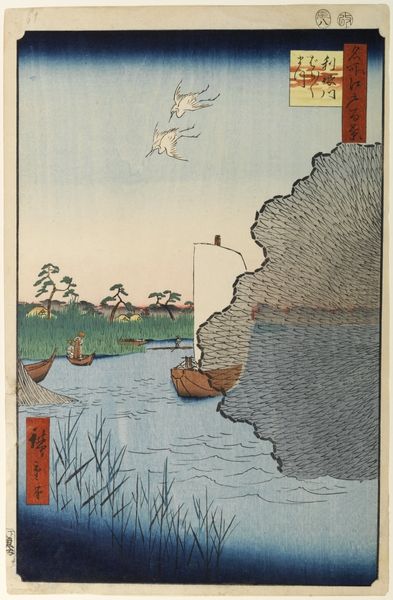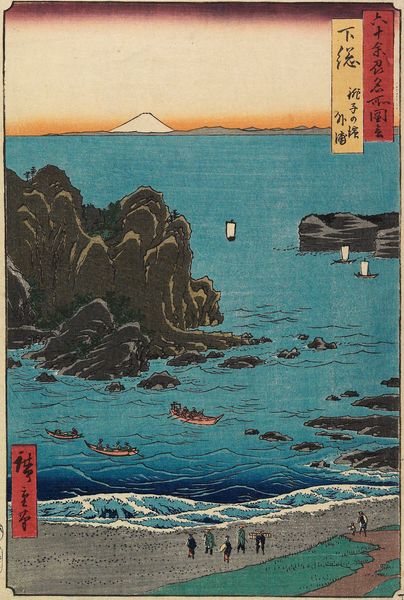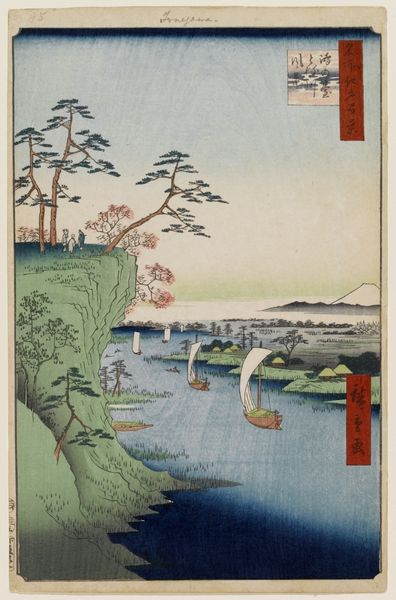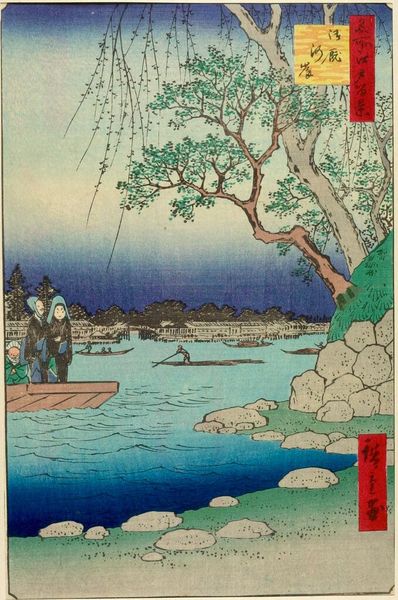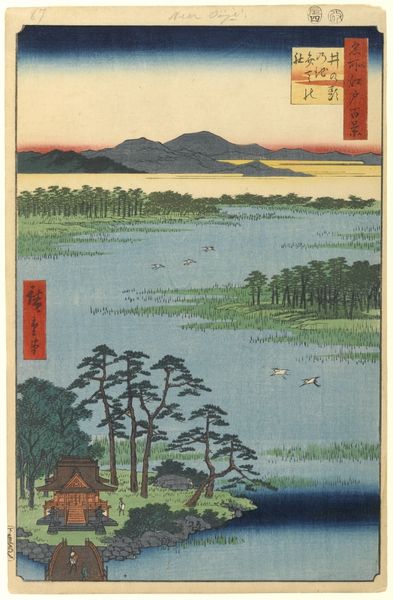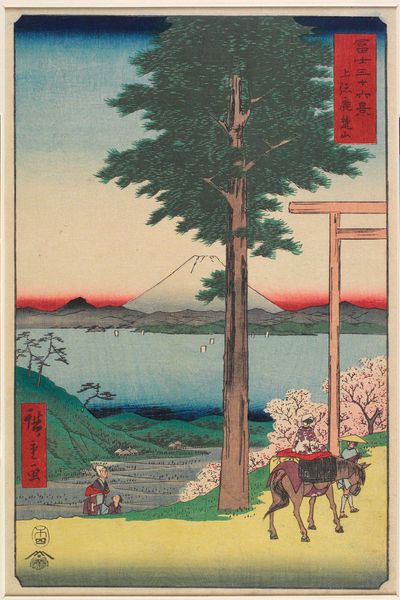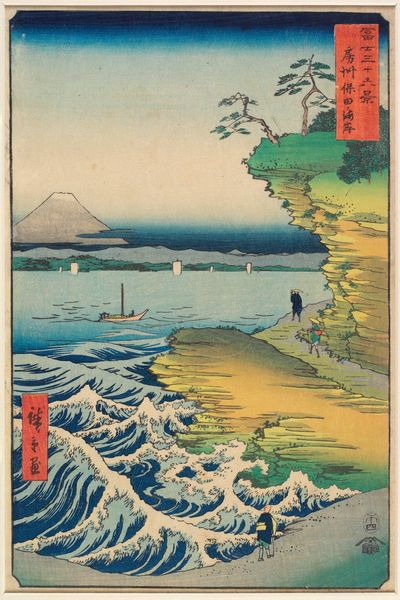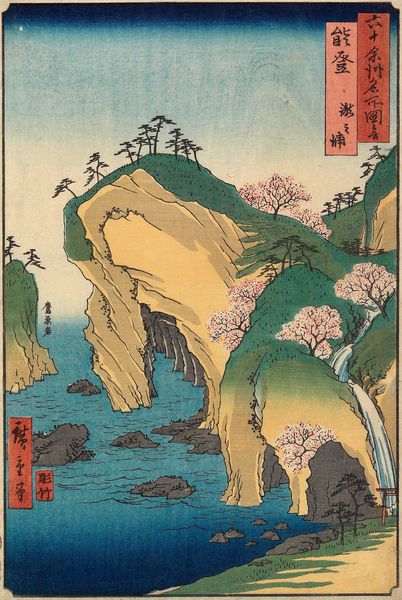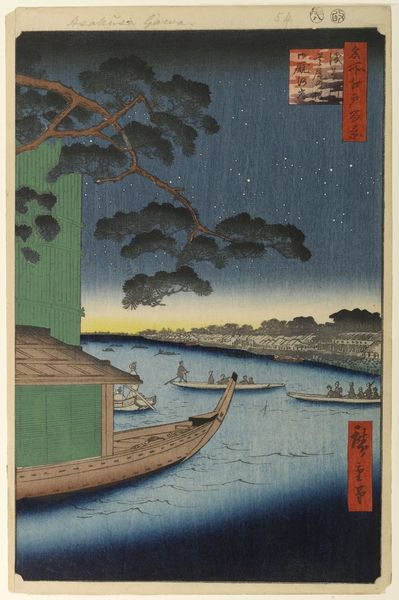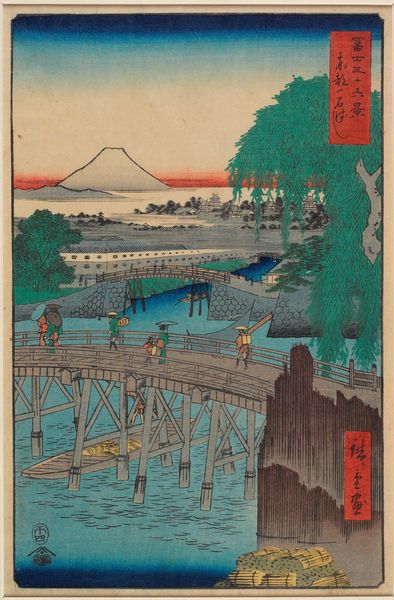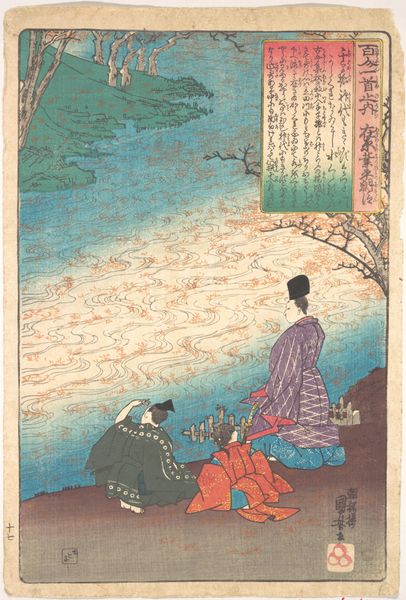
tempera, print, ink, woodblock-print
#
tempera
# print
#
asian-art
#
landscape
#
ukiyo-e
#
ink
#
woodblock-print
#
orientalism
Dimensions: 13 1/4 x 8 11/16 in. (33.7 x 22 cm) (image)13 3/4 × 9 1/4 in. (34.9 × 23.5 cm) (sheet, vertical ōban)
Copyright: Public Domain
Curator: This is "Scattered Pines," a woodblock print possibly dating from 1856 to 1858, by Utagawa Hiroshige, currently held in the Minneapolis Institute of Art. Editor: My immediate sense is tranquility, a stillness broken only by the suggestion of movement – the flight of the birds, the subtle ripples in the water. The textures created by the woodblock are fascinating. Curator: Indeed. Hiroshige was working within the ukiyo-e tradition, a style that flourished in Japan, particularly during the Edo period. It was closely connected with the burgeoning urban culture and, notably, a new merchant class. His prints, particularly landscape, became immensely popular and accessible. Editor: Those pines, though! They dominate the composition and appear in the print title itself. For me, pine is linked to endurance and steadfastness, particularly when seen as a grove along shorelines as pictured here. Are those boats heading toward refuge? Or do the trees suggest some threshold to overcome? Curator: That interplay of symbolism and daily life is characteristic of ukiyo-e. Consider that woodblock prints in particular arose out of collaborative workshops of publishers, designers, block cutters and printers. We know that woodblock-printing has had deep influence across a variety of print media worldwide for this accessibility. But the symbolism within the visual vocabulary – the scattered pines – is deeply meaningful and intentional to cultural context. Editor: The very nature of the woodblock medium contributes to the symbolic qualities here. Those deliberate carving marks bring such a vivid depth, both within the towering hill at the painting's center and, for example, within those reeds in the foreground, suggesting resilience and flexibility as much as simply picturing marsh grasses. Curator: Absolutely, and don't forget that Japanese landscape prints found a dedicated market with Western audiences, notably becoming the aesthetic springboard of “Japonisme”. Hiroshige's visual lexicon became adopted for modern European painters in the 19th Century looking to depart from realism. His artistic style reshaped the market as Japanese aesthetics became deeply fashionable. Editor: So, through Hiroshige’s print, what seems like a scene of everyday life in 19th-century Japan, has served to translate ideas and perceptions over the centuries? Curator: Precisely! I am also intrigued to think that by observing shifts in consumption and display of prints such as "Scattered Pines", that the relationship to commerce in artistic expression has roots that are still strongly felt in current visual media and marketing today. Editor: It’s wonderful to consider the rich cross-cultural flow in an image so serenely still.
Comments
No comments
Be the first to comment and join the conversation on the ultimate creative platform.
